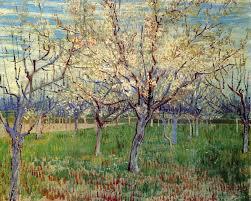Is Buenos días Italian Or Spanish?
4 min read
1) Buenos das: Italian or Spanish?
Greetings from Spanish-speaking countries are some of the most well-known around the world. Buenas dias, Buenos dias, and Buenos dias are all commonly used phrases that you’ll hear throughout Spain and Latin America.
But what does buenos dias actually mean?
The phrase buenos dias is a combination of the words bueno, which means “good,” and dia, which means “day.” Together, they form a phrase that can be translated to mean “good day” or “hello.”
This phrase is commonly used as a greeting in Spanish-speaking countries. It can be used at any time of day, but is most commonly used in the morning as a way to say “good morning.”
While buenos dias is the most common way to say “hello” in Spanish, there are other greetings that can be used depending on the time of day.
For example, buenas tardes can be used in the afternoon as a way to say “good afternoon,” and buenas noches can be used in the evening as a way to say “good evening” or “good night.”
So, is buenos dias Italian or Spanish?
The answer is that buenos dias is a Spanish greeting that can be translated to mean “good day” or “hello.” While the phrase is similar to the Italian greeting buongiorno, it is not the same thing.
2) The Origins of Buenos Das
Buenos días is a Spanish phrase that means “good day” or “good morning”. It is used as a greeting in Spanish-speaking countries.
The phrase is derived from the Latin word “bonus”, which means “good”. “Días” is the plural form of the Spanish word “día”, which means “day”.
In Spanish, the phrase is used as a standalone greeting. In other languages, such as Italian, the phrase “buon giorno” is used, which literally means “good day”.
The phrase “buenos días” can also be used to mean “hello” or “good afternoon”, depending on the time of day.
In English, the phrase “good morning” is typically used as a greeting. However, the phrase “buenos días” can also be used in English-speaking countries as a way to say “hello” or “good day”.
3) How the meaning of Buenos das has changed over time
The meaning of Buenos días has changed over time. It originally meant “good day,” but now it can mean “hello,” “good morning,” or “good afternoon.” The change in meaning is likely due to the influence of other languages, specifically English. In English, “hello” can be used at any time of day, so it’s not surprising that the Spanish translation would follow suit.
The change in meaning is also likely due to the fact that Spanish is spoken in more countries than just Spain. In Spanish-speaking countries around the world, the time of day is often not as important as it is in English-speaking countries. In many Spanish-speaking cultures, people greet each other with a simple “hello” regardless of the time of day.
So, while the meaning of Buenos días has changed over time, it is still a very common and polite way to greet someone in Spanish.
4) The different ways Buenos das is used in Spanish and Italian
Buenos días is a Spanish phrase that means “good morning.” It can also be used as a greeting at any time of day. In Spanish, the word buenos is used as an adjective to describe something as good. Días is the plural form of the Spanish word día, which means “day.”
The phrase Buenos días can be used in a number of different ways in Spanish. It can be used as a simple greeting, like “good morning” in English. It can also be used to ask how someone is doing, like “how are you?” in English.
In Spanish, the word buenos can also be used on its own as a standalone greeting. For example, you might say buenos días to someone you pass on the street.
The phrase buenos días can also be used to start a conversation. For example, you might say buenos días to a friend you haven’t seen in a while to ask how they’re doing.
The word buenos can also be used in a number of different ways in Italian. It can be used as an adjective to describe something as good. For example, you might say buono giorno to someone to mean “good morning.”
Buenos can also be used on its own as a standalone greeting in Italian. For example, you might say buono giorno to someone you pass on the street.
In Italian, the word buono can also be used to start a conversation. For example, you might say buon giorno to a friend you haven’t seen in a while to ask how they’re doing.
5) Why Buenos Das is both Italian and Spanish
Buenos días is a Spanish greeting that means “good day” or “good morning”. It can also be used as a farewell, meaning “goodbye” or “have a nice day”.
The word Buenos is derived from the Latin word bonus, which means “good”. The word días is derived from the Latin word dies, which means “day”.
The greeting can be used in both formal and informal settings. When used in a formal setting, it is more common to use the complete phrase Buenos días, señor or Buenos días, señora. When used in an informal setting, the word Buenos may be dropped.
The greeting is also used in Italian, although the word order is reversed. In Italian, the greeting is Buongiorno. The word buongiorno is derived from the Latin word bonus, which means “good”, and the Italian word giorno, which means “day”.
The greeting can be used in both formal and informal settings. When used in a formal setting, it is more common to use the complete phrase Buongiorno, signore, or Buongiorno, signora. When used in an informal setting, the word buongiorno may be dropped.







